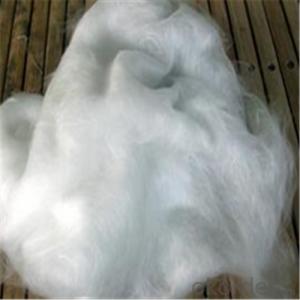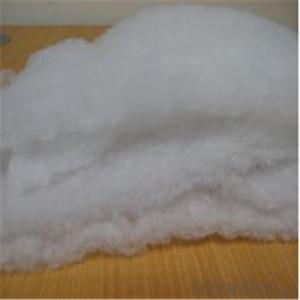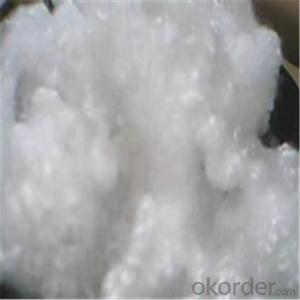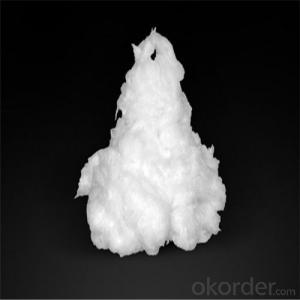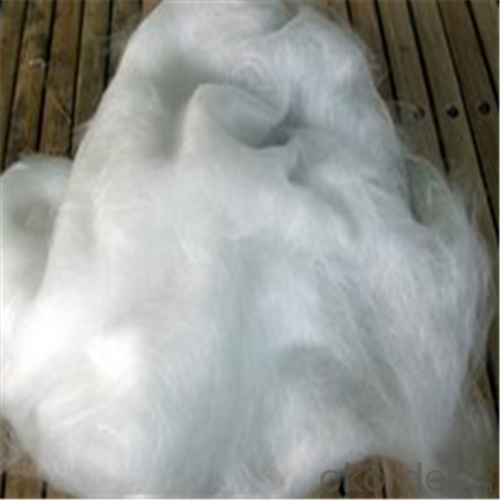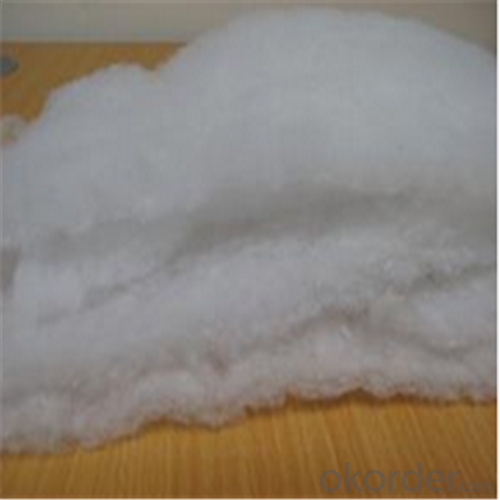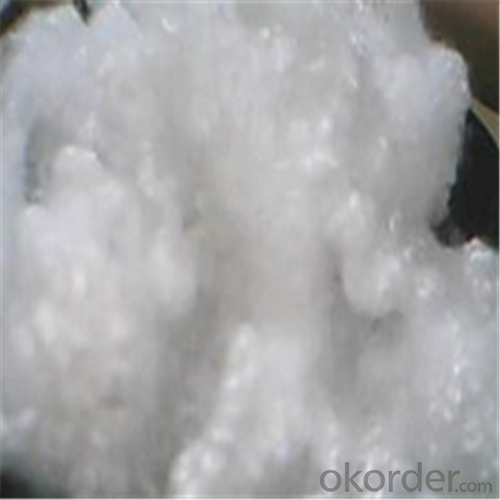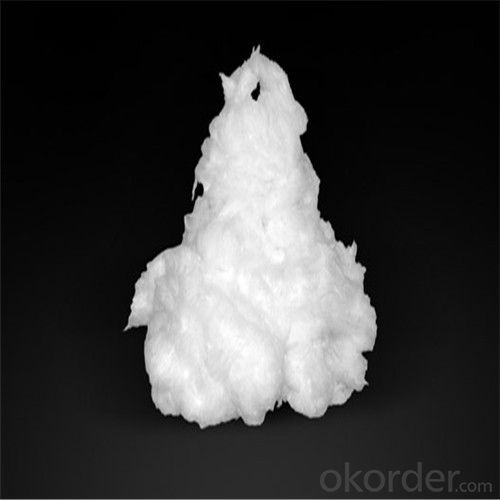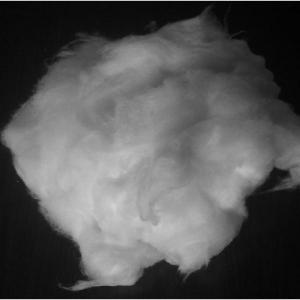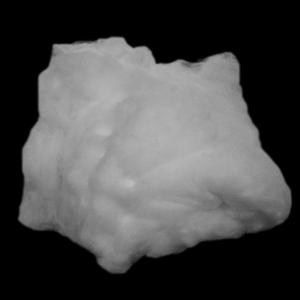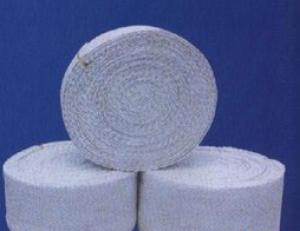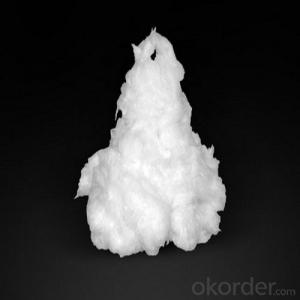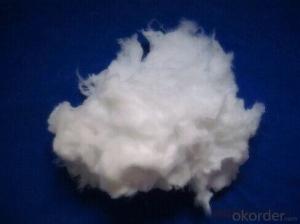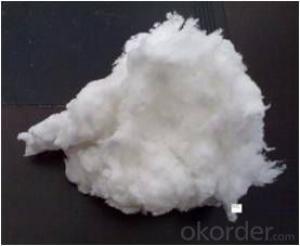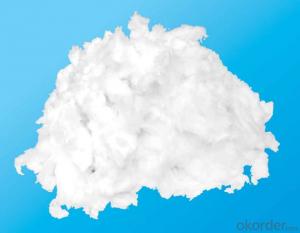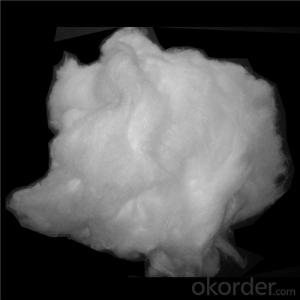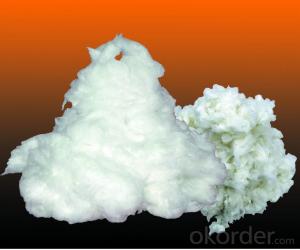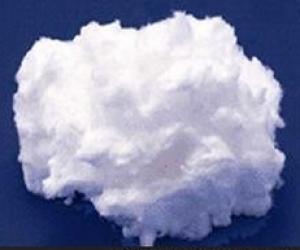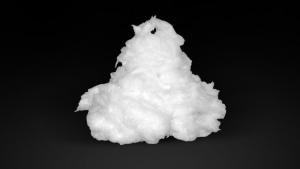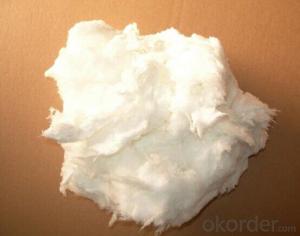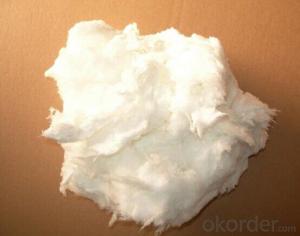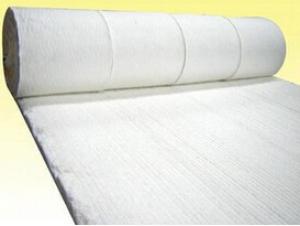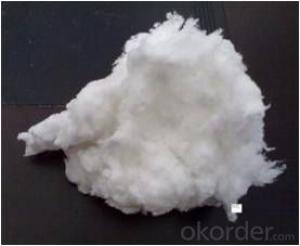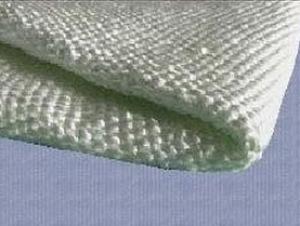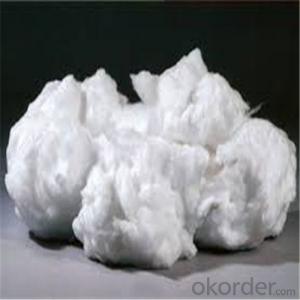Ceramic Fiber Bulk Insulation
- Loading Port:
- Qingdao
- Payment Terms:
- TT or LC
- Min Order Qty:
- 100 kg
- Supply Capability:
- 10000 kg/month
OKorder Service Pledge
OKorder Financial Service
You Might Also Like
Bulk Ceramic Fiber Insulation
Product Description:
Ceramic fiber is manufactured from high purity raw material alumina powder, silica sand for the high temperature grades and zircon sand is also used. The ceramic mixture is heated in a high temperature electric furnace and the stream of molten material is drawn into fibers by either spinning or blowing .It is produced by advanced “blown” and “spun” processes .Ceramic fiber bulk shows a high temperature stability ,low weight and heat capacity and an outstanding sound absorption is complemented by their resistance to oxidation and reduction
Product Features:
• Excellent thermal and chemical stability
• Low thermal conductivity and heat storage
• Excellent thermal shock resistance and sound –absorption capability
• No bonding agent and corrosive substance
• Asbestos free
Product Applications:
• Furnace curtain of high temperature industrial
• Heat insulation of high temperature pipe and container
• Soft seal of petrochemical industry furnace tube
• Protection of cable or fuel pipeline
• Materials of high temperature protection composite
Product Specifications:
Type | COM | STD | HP | HA | HZ |
Classification Temp (ºC) | 1100 (2012℉) | 1260 (2300℉) | 1260 (2300℉) | 1360 (2480℉) | 1430 (2606℉) |
Work Temp (ºC) | <1000< span=""> (1832℉) | 1050 (1922℉) | 1100 (2012℉) | 1200 (2192℉) | 1350 (2462℉) |
Color | Pure White | Pure White | Pure White | Pure White | Pure White |
Fiber Diameter (um) Blown | 2--3 | 2--3 | 2--3 | 2--3 | 2--3 |
Fiber Diameter (um) Spun | 3—4.5 | 3—4.5 | 3—4.5 | 3—4.0 | 3—4.0 |
AL₂O₃ (%) | 44 | 45--46 | 47--49 | 52--55 | 39--40 |
AL₂O₃ + SiO₂ (%) | 96 | 97 | 99 | 99 | ------- |
ZrO₂ (%) | -------- | -------- | -------- | -------- | 15--17 |
Fe₂O₃ (%) | <1.2< span=""> | <1.0< span=""> | 0.2 | 0.2 | 0.2 |
Na₂O + K₂O (%) | ≤0.5 | ≤0.5 | 0.2 | 0.2 | 0.2 |
Place of Origin: | China (Mainland) | Brand Name: | Model Number: | STD | |
Application: | Expansion Joint Packing | Grade: | ST (Standard) | Dimensions: | 18kg/bag |
Working Temperature: | 2300F | Fiber Diameter: | 3-4.5um | Color: | Pure White |
Fiber Diameter (um) Blown: | 2--3 | Fiber Diameter (um) Spun: | 3-4.5 | AL₂O₃ (%): | 45--46 |
Product Packaging:
Packaging Details: | Woven bags, carton or according to customer's requirement |
Delivery Details: | 10 days |
Product Images:
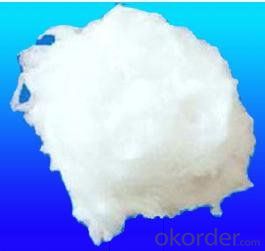
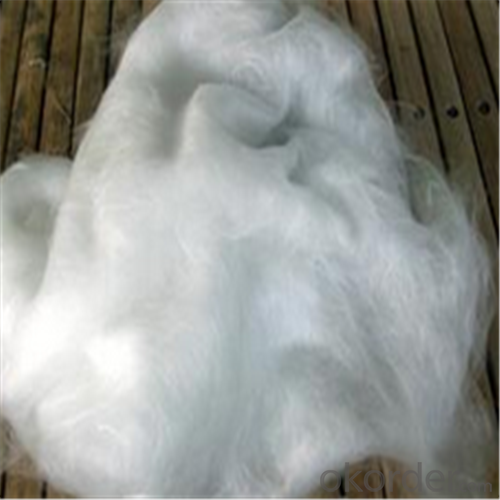
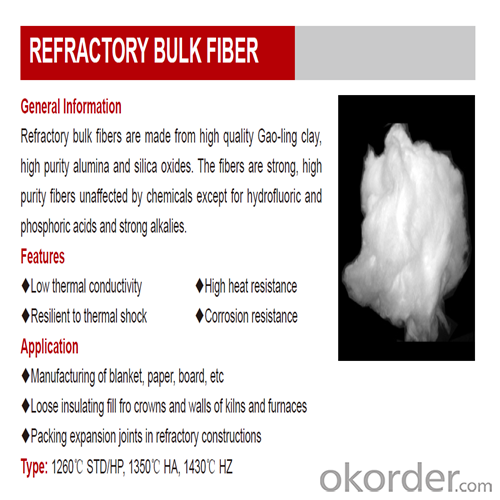
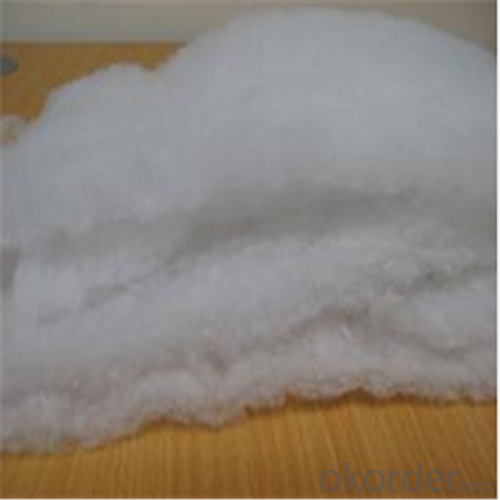
FAQ:
Q1: Why buy Materials & Equipment from OKorder.com?
A1: All products offered by OKorder.com are carefully selected from China's most reliable manufacturing enterprises. Through its ISO certifications, OKorder.com adheres to the highest standards and a commitment to supply chain safety and customer satisfaction.
Q2: How do we guarantee the quality of our products?
A2: We have established an advanced quality management system which conducts strict quality tests at every step, from raw materials to the final product. At the same time, we provide extensive follow-up service assurances as required.
Q3: What other products does OKorder offer?
A3: We offer a full range of refractory bricks, mortar, cement, ceramic fiber products, and more.
Q4: Where are Ceramic Fiber products used?
A4: Ceramic fiber products have many advantages, including: high temperature stability, lightweight, superior insulation, and ease of application. Fiber products are available in a variety of product forms to solve a range of thermal management application problems across various industries. The main industrial market segments that use ceramic fiber and soluble fiber products are the aluminum, iron, steel, heat treatment, power, incineration, boilers, and glass industries.
Q5: What kind of Ceramic Fiber should I use?
A5: When selecting the fiber type for a particular application, it is important to consider all factors. If the fiber/fabric will not have to support a load at temperature, the lower-cost industrial grade fibers may be appropriate. However, if the fiber will be load bearing at temperature as in ceramic matrix composites, then one of the composite grade fibers would be a better choice. Of course there may be other factors, such as corrosion, chemical resistance, or atmospheric conditions that may require trade-off in the selection process.
Q6: What`s the lead time for my order?
A6: It depends on customers’ requirements and our production schedule. And usually we need 30-60 days for refractory bricks, 10-25 days for unshaped refractory materials and 10-20 days for ceramic fiber blankets.
Q7: Can you offer Door-to-Door delivery?
A7: Yes, but only for some countries such as U.S., UAE, Saudi Arabia, Iran, and Russia, etc.
Q8: What is the minimum quantity?
A8: There is no minimum order quantity. Depending on the item and processing, there may be a minimum production required, however we can offer a quotation based only on the quantity you need
- Q: What are the main differences between an ordinary furnace and a ceramic fiber furnace?
- The main difference between ordinary furnace and ceramic fiber furnace:Refractory, heat insulation: ceramic fiber furnace low thermal conductivity, low thermal conductivity, is a better thermal insulation materials, the use of temperature within one thousand and three hundred Baidu. The heat conductivity of common furnace is higher and the heat loss is great
- Q: Should the ceramic fiber furnace be compacted?
- The simplest, the least durable method, uses ceramic fiber blankets for wrapping, which is often caused by the poor density of the ceramic fiber blanket and the lack of anchorage
- Q: Glass fiber cotton, aluminum silicate cotton, rock wool, what's the difference between these three?
- Rock wool: is a kind of insulation materials, widely used in exterior wall insulation, because rock wool dust carcinogenicity, the state has banned the use of industry.
- Q: Aluminum silicate ceramic fiber cotton smoke will cause pneumoconiosis?
- Most of the aluminosilicate ceramic fiber cotton with high quality bauxite, high purity alumina, silica, zircon sand as raw materials, by blowing or swinging method generated by fiber, cotton collector or settlement device assembled into bulk fiber, also known as cotton fiber. Therefore, according to its composition, after inhalation, will lead to pneumoconiosis.
- Q: Is the ceramic fiber cloth poisonous?
- With aluminum, zinc and other non-ferrous molten metal erosion capacity. Excellent high temperature strength. The bottom heat conductivity makes the product have good heat insulation performance. Excellent electrical insulation performance. Non-toxic, harmless, no adverse effects on the environment, excellent tensile properties.
- Q: What is the diameter of the ceramic fiber? How to mix?
- Fiber diameter: rejection fiber more coarse, rejection fiber generally 3.0-5.0 - m, spinneret fiber is generally 2.0-3.0 - m;
- Q: Is aluminum silicate fiber poisonous?
- Then use the compressed air jet or use the wire throwing machine to turn the yarn into a fiber. After the cotton collector sets the cotton, it forms the ceramic fiber cotton. In the whole process of production, it can be found that the raw material does not contain toxic substances. Compared with asbestos, it is a substitute product of asbestos and contains no carcinogens.
- Q: The difference between the ceramic fiber blanket and rock cotton blanket
- Ceramic fiber lining: low thermal conductivity of ceramic fiber lining in the average temperature of 400 degrees, the thermal conductivity is less than 0.1w/mk, the average 600 degrees less than 0.l5 w/mk, average 1000 degrees less than 0.25w/mk, about l/8 as a lightweight clay brick, lightweight refractory lining l/10, adiabatic effect.The construction of ceramic fiber lining is simple: no expansion joints are needed during construction, and the construction personnel can be started after the basic training. The technical factors of construction have little influence on the insulation effect of the lining.
- Q: Aluminum silicate needle carpet and ceramic fiber insulation performance of the good
- Aluminosilicate ceramic fiber has two different production processes, respectively, the rejection process and the blowing process. The carpet produced by the spinning process has long fiber length, high tensile strength and wide range of use. The blanket produced by blowing process is short in length and easy to break, and the scope of application is relatively narrow.
- Q: Ceramic fiber material fire shutter door how many square?
- There is no full ceramic fiber material fire shutter;
Send your message to us
Ceramic Fiber Bulk Insulation
- Loading Port:
- Qingdao
- Payment Terms:
- TT or LC
- Min Order Qty:
- 100 kg
- Supply Capability:
- 10000 kg/month
OKorder Service Pledge
OKorder Financial Service
Similar products
Hot products
Hot Searches
Related keywords
